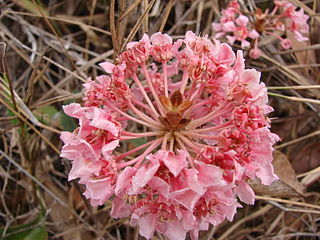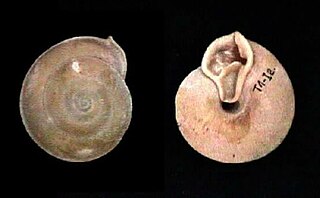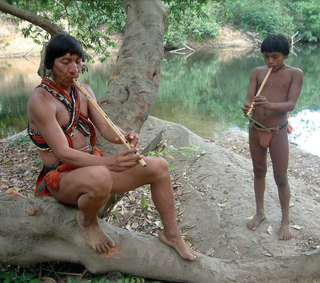
Venezuela, officially the Bolivarian Republic of Venezuela, is a country on the northern coast of South America, consisting of a continental landmass and many islands and islets in the Caribbean Sea. It has a territorial extension of 916,445 km2 (353,841 sq mi), and its population was estimated at 29 million in 2022. The capital and largest urban agglomeration is the city of Caracas.
The Colonia Tovar dialect, or Alemán Coloniero, is a dialect that is spoken in Colonia Tovar, Venezuela, and belongs to the Low Alemannic branch of German.

Caiman is a genus of caimans within the alligatorid subfamily Caimaninae. They inhabit Central and South America. They are relatively small sized crocodilians, with all species reaching lengths of only a couple of meters and weighing 6 to 40 kg on average.
Macroecology is the subfield of ecology that deals with the study of relationships between organisms and their environment at large spatial scales to characterise and explain statistical patterns of abundance, distribution and diversity. The term was coined in a small monograph published in Spanish in 1971 by Guillermo Sarmiento and Maximina Monasterio, two Venezuelan researchers working in tropical savanna ecosystems and later used by James Brown of the University of New Mexico and Brian Maurer of Michigan State University in a 1989 paper in Science.

Pterandra is a genus in the Malpighiaceae, a family of about 75 genera of flowering plants in the order Malpighiales. Pterandra comprises 15 species of trees, shrubs, and subshrubs, all but two native to South America, principally Colombia, Venezuela, and Brazil; the exceptions are from Panama. There are only some ornamental plants introduced in China, and there are no native varieties.
The Williamson's marsupial frog is a species of frog in the family Hemiphractidae. It is endemic to north-central coastal Venezuela and only known from its type locality, San Esteban in the state of Carabobo. It is a poorly known species that has not been collected since it was first described, based on a single specimen collected in 1920.

The thick-billed euphonia is a species of bird in the family Fringillidae, formerly placed in the Thraupidae.

Not to be confused with Octonauts.

The lesser capybara is a large semiaquatic rodent of the family Caviidae found in eastern Panama, northwestern Colombia, and western Venezuela. The lesser capybara was described as a species in 1912, but was later re-categorized as a subspecies of the capybara. Following studies of anatomy and genetics in the mid-1980s, it was recommended that it again should be recognized as a separate species, and this gained more widespread recognition in 1991, although some continue to consider it a subspecies.
Nephelomys meridensis, also known as the Mérida oryzomys, is a species of rodent in the genus Nephelomys of family Cricetidae. It is found in cloud forest in the Sierra Nevada de Mérida of western Venezuela at elevations from 1100 to 4000 m. It is solitary, nocturnal and terrestrial, and has a varied diet.

Labyrinthus umbrus is a species of air-breathing land snail, a terrestrial pulmonate gastropod mollusk in the family Labyrinthidae.

Labyrinthus plicatus is a species of air-breathing land snail, a terrestrial pulmonate gastropod mollusk in the family Labyrinthidae.

Puperita pupa is a species of small sea snail, a marine gastropod mollusk in the family Neritidae, the nerites.

Labyrinthus leucodon is a species of air-breathing land snail, a terrestrial pulmonate gastropod mollusk in the family Labyrinthidae.

The Andean tapeti or Andean cottontail is a species of cottontail rabbit native to Colombia, Venezuela, Peru and Ecuador. It was previously considered a subspecies of the common tapeti. Living at high elevations in the treeless Páramo of the Andes, analysis in 2017 confirmed that it is sufficiently distinct in both appearance and genetics to be considered a species in its own right. Although widespread, it remains poorly known, as few studies have been conducted on its biology and habits as distinct from those of the tapeti

Robert C. Pringle, originally named Chequamegon, was a wooden-hulled American tugboat that sank without loss of life on Lake Michigan, near Sheboygan, Wisconsin, on June 19, 1922, after striking an obstruction.

The Hodï or Jotï are a small group of indigenous people who live in the Amazon rainforest in Venezuela. The last census held in Venezuela, in 2011, registered 982 individuals identifying as Hodï; a 2016 estimate accounted a population of around 1200. They speak the Hodï language and are closely related to the Piaroa people, although linguistic connections between the two people groups have not reached consensus among scholars. They are also known by a number of exonyms as the Hoti, Chicano, Shikana, Yuana, Waruwarú, or Rua.
Baker, Horace Burrinton. 1926: The mollusca collected by the University of Michigan-Williamson Expedition in Venezuela. Occasional Papers of the Museum of Zoology University of Michigan. Nº 167












